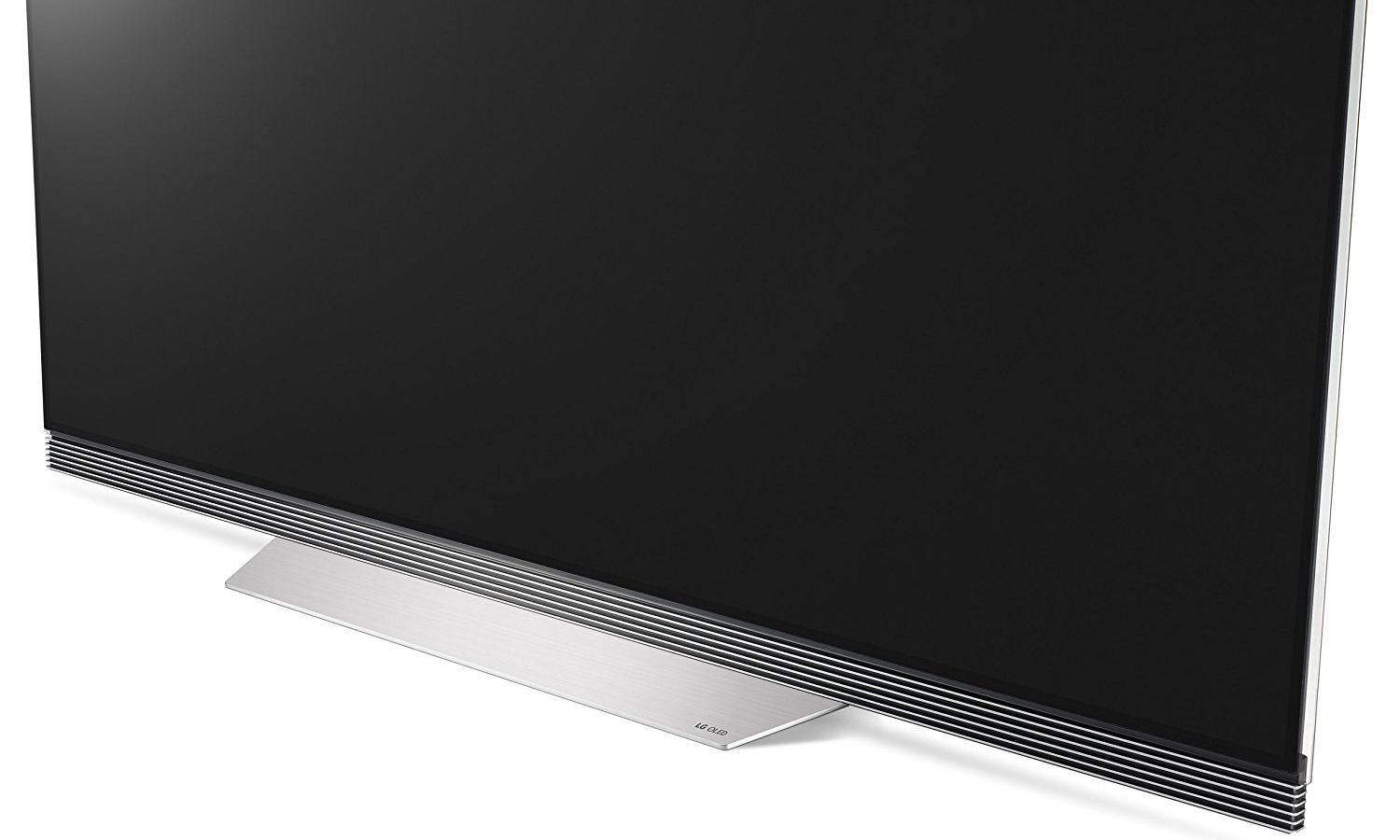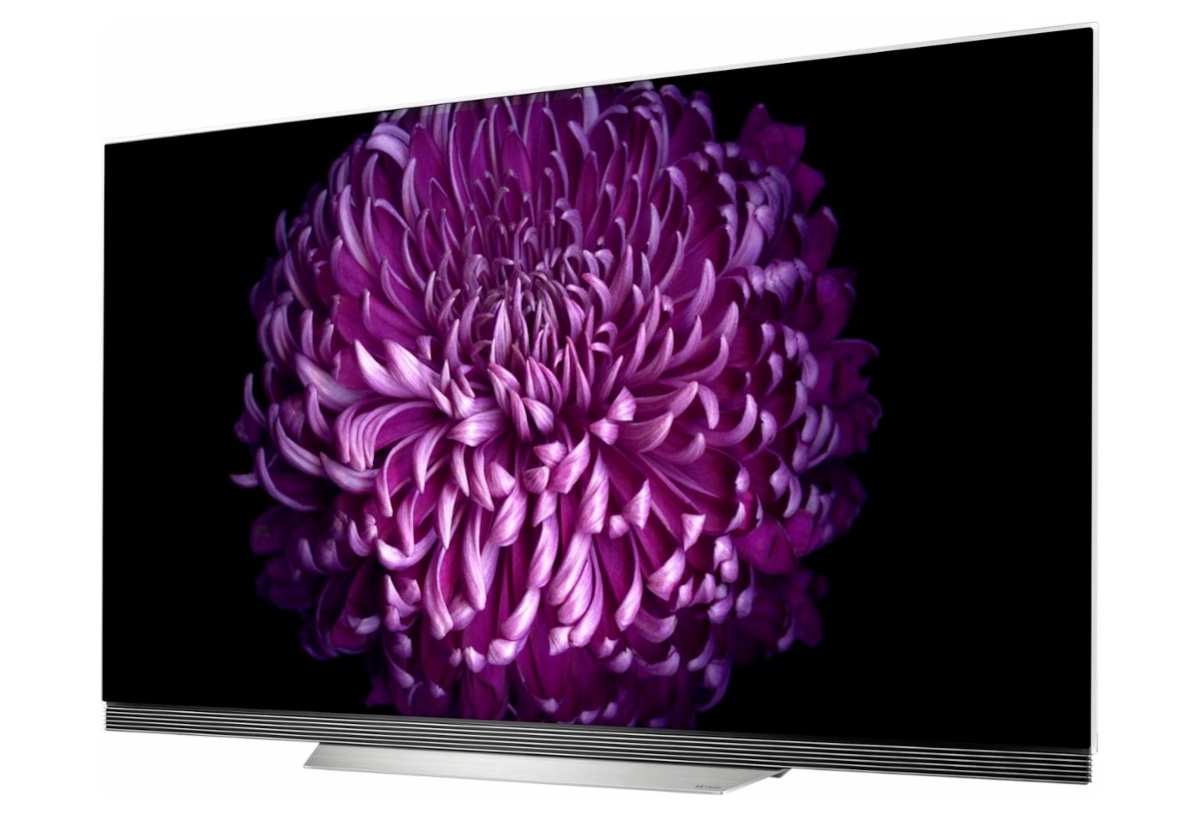Tom's Guide Verdict
Offering a strikingly sharp, attention-getting picture, the LG E7 is a fantastic OLED TV that backs up its good looks with robust audio.
Pros
- +
Stunning OLED picture
- +
Great off-axis viewing
- +
Full-throated sound system
- +
Broad support for the latest 4K formats
Cons
- -
Expensive
Why you can trust Tom's Guide
These days, you can get a respectable 65-inch 4K TV for a little over a grand. But what if you want more than respectability? Then OLED is the answer, with LG's E7 OLED65E7P ($3,999) delivering a picture so stunning that others look dull by comparison.
OLED display technology means the TV can deliver deep blacks (because there's no need for a separate backlight enabling whole areas of the screen to go completely dark) and crisp edges around images. To the already impressive design, LG has made some adjustments to boost color fidelity and improve overall brightness.The 65-inch E7 also supports the major high dynamic range (HDR) formats, including Dolby Vision, Ultra HD Premium, and HDR10.
Plus, the E7 offers surprisingly robust audio that will make you forgo a soundbar.
The LG E7 is priced about $1,000 less than the Sony A1E, which is also based on LG's 65-inch OLED panel — and that makes for some interesting comparisons, depending on whether you're looking for a better OLED value or the ultimate 4K picture.
Design: Luscious Home Theater
The E7 echoes last year's design with its "picture-on-glass" construction, meaning that the OLED is placed directly on the glass screen, giving it a sleek appearance and a translucent edge around the entire display (rather than having a conventional black bezel). Along the bottom is a buxom sound system with a radiator-style grill that gives the audio enough room to breathe.
The 4K HDR version of Deadpool really showed LG's OLED in its element. The movie looked stunning, and the matte red suit of the antihero looked more textured on the LG OLED compared to LCD sets.
It's an attractive presentation that will suit just about any living situation. In addition, the E7 comes with a panoply of connections: Four HDMI ports, three USB connections, and RF input, composite video, Ethernet and optical jacks.
Performance: A Real Crowd-Pleaser
LG is the primary purveyor of OLED TVs, and it continues to improve on its panels. With the 65-inch E7, it has visibly improved some slight weaknesses in rendering deep red hues, and the set does appear slightly brighter. (Although critics will continue to correctly point out that OLEDs cannot achieve the same peak brightness levels that LCD panels offer.)

Because it's an OLED TV, the E7 has the best off-axis viewing angles, meaning you don't have to sit dead center in front of the TV to appreciate its rich colors and deep blacks.
In the color realm, our subjective impressions were confirmed by our color spectrum benchmarks. LG's E7 is nearly as precise as Sony's OLED model, the A1E. We tested all three sets using an Xrite i1 Pro connected to Calman's software, and set the test pattern to cover 10 percent of the screen.

In their respective best modes (Cinema and Cinema Pro), the LG's Delta-E score was 2.3 to the Sony's 1.5; numbers closer to 1 are better. Both were slightly less accurate than Samsung's Q7F QLED TV, which had a score of 1.4.
In their Best modes, Sony also bested LG when it came to color gamut, producing 107.5 percent of the Rec. 709 spectrum, to LG's 92.8 percent. Samsung's set split the difference at 97.3 percent.

There's a slight pullback in the blue area of the spectrum, which helps give the LG picture a warmer feeling that we appreciated (although next to the Sony A1E, its whites looked slightly less pure).
If you're looking for a cinema-like experience, LG's E7 should be at the top of your list.
Using the E7's Cinema preset video mode, the 4K HDR version of Deadpool really showed LG's OLED in its element. The movie's CGI-filled scenes looked stunning, with a crispness and imaging detail that showed off the sharply rendered crosshatching of black carbon fiber panels and the glossy black reflections of crushed vehicles in the opening action scene. Even the dull matte red suit of the antihero looked more textured on the LG OLED compared with LCD sets, such as the Samsung Q7F.
MORE: Best 4K HDR Blu-ray movies on Amazon
In other material, such as The Martian, the LG E7 still delivered the punchiest picture, immediately drawing attention to its display and away from top-end sets from Vizio and Samsung. Colors were simply more intense and saturated. The exception was Sony's A1E, which began to reveal some differences between the two competing OLEDs.

In dark objects on the screen, the Sony A1E revealed slightly more detail than the LG E7. Staring at a black turtleneck, for example, revealed a few more wrinkles on Sony's display compared with LG's screen. Samsung's Q7F also did well uncovering such shadowy picture details, but it does so by compromising overall black levels so that the picture looks slightly gray next to the two OLEDs.
The E7's built-in sound system is full-throated, but has the range to deliver the dulcet tones of a classical music soundtrack and the bombast of a shoot-em-up action scene.

If the LG E7 lacks some degree of subtlety compared with the pricier Sony A1E, it looked slightly better in a brightly lit room. OLED displays cannot blast the brightness levels like LCD panels can, which can be a problem in sun-drenched rooms. LG has improved its sets in this regard so that you don't have to pull the drapes while you watch afternoon football games.

Regarding peak brightness, which we measured in each set's Vivid mode, the E7 (446.5 nits) didn't fare as well as the Sony (684 nits); neither came anywhere near the Samsung's 1008 nits. While LCD sets like the Samsung produce better brightness numbers than OLEDs like the LG and Sony models, the OLED sets make up for the difference with better contrast.

If you're looking for a cinema-like experience, LG's E7 should be at the top of your list. It has a richness that doesn't impede rapid, action sequences. It also handled some of our challenging upscaling tests without creating excessive blur or picture distortions. Even in scenes with extensive pyrotechnics, the LG set looked more movie-like, with its contrast range positioned in the right frequency range.
Strong Audio
The E7's built-in sound system is full-throated, but has the range to deliver the dulcet tones of a classical music soundtrack and the bombast of a shoot-em-up action scene. It also revealed the plaintive edges of vocals we listened to, as well as more robust bass notes. LG gives the system several preset modes (sports, games and music) but we listened to it primarily in cinema mode.
We continue to be fans of the webOS software, but its online offerings are relatively scant compared to sets with Android TV or Roku TV built in.
A Dolby Atmos setting (in LG's case with 4.1 channels) on the E7 is a notable improvement. It delivered an immersive sensation with the sound of falling rain on one soundtrack heralding an approaching storm, augmented by the sound of keyboards in the background and the tolling of a bell. While it can't re-create the true 3D audio effects you'll hear in a movie theater, it was pretty darn good. Compared with the Sony A1E's unique sound system (which uses the screen itself as a speaker), LG's audio is more rounded and softer, a sonic profile some listeners may prefer.
Smart-TV Features: Snazzy webOS
Rather than adopt a common Android TV or similar smart-TV program, LG continues to go it alone with its webOS 3.5 software. It's a snappy and snazzy user interface that remains uncluttered and relatively easy to navigate. Setting up the TV, for example, involves an active set of splash pages ("Here we go!" enthuses one; "Surf's Up!" says another when you get to the apps) and a calming voice walks you through the initial options.
We continue to be fans of the webOS design with its tabs along the bottom of the menu screen. For streaming entertainment, the E7 supports the major services, including Netflix, Amazon Video, Hulu and Google Play Movies and TV. But compared to the likes of Android TV, which Sony uses, or sets with Roku TV built in, the online offerings are relatively scant. If you're considering dropping your cable or satellite TV provider, you might want to add a 4K Roku box to this set.
Unlike Sony, LG has not neglected the remote control. The version that's included with the E7 is solid and substantial, resting comfortably in one's hand. It has a scrolling/clickable wheel in the center for moving a cursor around the screen like a wireless mouse (LG calls it a "Magic Remote").
There are also dedicated controls for Netflix, Amazon and playback, as well as a unique live zoom button that lets you digitally replay and zoom in on details in a picture (was the ball in or out?). All in all, it's a quality controller well-suited to this TV.
Bottom Line

If you're willing to pay top dollar for the best picture quality, the LG E7 belongs at the top of your list. Its OLED display offers a stellar picture with eye-popping color, killer contrast and ultrawide- viewing angles. We were also pleasantly surprised by the Dolby Atmos-powered audio system.
However, LG does finally have some competition from Sony's own A1E OLED TV, which beats the E7 on brightness and revealing details in shadows. Sony's set also has the more robust Android TV platform in its corner, but it costs about $1,000 more.
On the other hand, Samsung continues to improve its top-of-the-line LCD TVs, which it now refers to as QLED (the Q is for quantum dot). The Samsung 65-inch Q7, for example, can't match the deep blacks or overall luster of the LG and Sony OLEDs, but it still offers excellent picture details (particularly in shadows) — for about $1,200 less.
LG's OLED sets have set a rather high watermark for crisp 4K picture quality, and the 65-inch version of the E7 is no exception.
John R. Quain has been reviewing and testing video and audio equipment for more than 20 years. For Tom's Guide, he has reviewed televisions, HDTV antennas, electric bikes, electric cars, as well as other outdoor equipment. He is currently a contributor to The New York Times and the CBS News television program.


